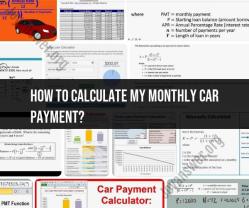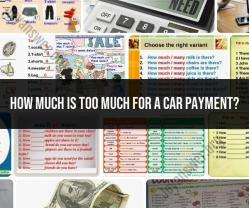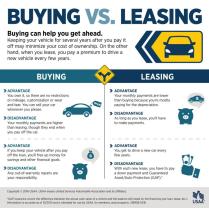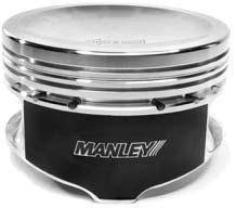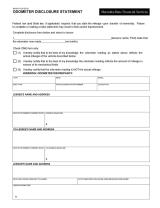What forms do I need to sell a car?
When selling a car in the United States, you'll need to complete several essential paperwork and follow certain procedures to ensure a smooth and legal transaction. The exact requirements can vary by state, so it's essential to check your state's specific regulations. However, here are some of the common forms and steps you may need to follow:
Vehicle Title: The most crucial document you'll need is the vehicle title (sometimes called the "pink slip"). This title must be signed by the current owner (seller) and include the name and address of the buyer, the date of sale, the selling price, and the odometer reading at the time of sale. Make sure to complete the necessary sections on the title.
Bill of Sale: Some states may require a bill of sale in addition to the title. This is a written document that records the sale of the vehicle and includes details such as the names and addresses of the buyer and seller, the sale price, the vehicle's make, model, and VIN (Vehicle Identification Number), and the date of sale.
Odometer Disclosure Statement: Federal law requires an odometer disclosure statement to record the vehicle's mileage accurately at the time of sale. This is often included on the title or as a separate form.
Release of Liability: In some states, it's a good idea for the seller to file a release of liability form with the state's Department of Motor Vehicles (DMV) or equivalent agency. This can help protect the seller from liability associated with the vehicle after the sale.
Notice of Sale: Some states may require a notice of sale or a similar form to be submitted to the DMV or relevant agency to notify them of the sale.
Smog Certification: In areas with smog or emissions testing requirements, the seller may need to provide a recent smog certification. This ensures that the vehicle complies with local emissions standards.
Other Documents: Depending on your state and the specific circumstances, you may need additional documentation. Check with your state's DMV or equivalent agency for any specific requirements.
Remember that state-specific rules and regulations can vary, so it's important to consult your state's DMV or equivalent agency for the exact paperwork and procedures required when selling a car in your area. Additionally, both the buyer and seller should keep copies of all relevant documents for their records.
What forms and documents are required when selling a car?
The specific forms and documents required when selling a car will vary depending on your state or country of residence. However, the following are some common documents that are typically required:
- Vehicle title: This is the legal document that proves ownership of the vehicle.
- Bill of sale: This is a document that both the buyer and seller sign to document the sale of the vehicle. It should include the following information:
- The vehicle's make, model, year, and VIN
- The purchase price
- The date of sale
- The signatures of both the buyer and seller
- Odometer disclosure statement: This is a document that discloses the mileage of the vehicle on the day of sale.
- Emissions test certificate: This document is required in some states to prove that the vehicle meets emissions standards.
- Maintenance records: Although not required in most states, it is a good idea to provide the buyer with any maintenance records you have for the vehicle. This will help them to see how well the vehicle has been maintained and can give them an idea of any potential upcoming repairs.
A step-by-step guide to the paperwork involved in selling a vehicle.
Here is a step-by-step guide to the paperwork involved in selling a vehicle:
- Gather all of the required documents.
- Complete the bill of sale and odometer disclosure statement.
- Have the buyer sign the bill of sale and odometer disclosure statement.
- Endorse the vehicle title to the buyer. This involves signing the title over to the buyer in the designated area on the back of the title.
- Provide the buyer with all of the required documents, including the title, bill of sale, odometer disclosure statement, emissions test certificate (if required), and maintenance records (if available).
Tips for ensuring a smooth and legal car sale transaction.
Here are some tips for ensuring a smooth and legal car sale transaction:
- Be prepared. Make sure you have all of the required documents before you meet with the buyer.
- Be honest and upfront about the condition of the vehicle. Disclose any known defects or problems to the buyer before they purchase the vehicle.
- Get everything in writing. Be sure to have the buyer sign the bill of sale and odometer disclosure statement before you hand over the vehicle and title.
- Be prompt. Once the sale is complete, be sure to transfer the title to the buyer and notify the DMV of the sale.
Understanding the legal obligations and responsibilities of the seller.
As the seller of a vehicle, you have a number of legal obligations and responsibilities. These include:
- Being honest and upfront about the condition of the vehicle.
- Disclosing any known defects or problems to the buyer before they purchase the vehicle.
- Transferring the title to the buyer in a timely manner.
- Notifying the DMV of the sale within a certain period of time.
Vehicle sale forms and regulations specific to your region or country.
Vehicle sale forms and regulations can vary depending on your region or country of residence. It is important to check with your local DMV to learn about the specific forms and requirements that apply to you.
Here are some resources for learning more about vehicle sale forms and regulations in specific regions:
- United States: National Highway Traffic Safety Administration (NHTSA)
- Canada: Canadian Vehicle Registration and Licensing Association (CVRLA)
- United Kingdom: Driver and Vehicle Licensing Agency (DVLA)
- Australia: Australian Government Department of Infrastructure, Transport, Regional Development, Communications and the Arts





